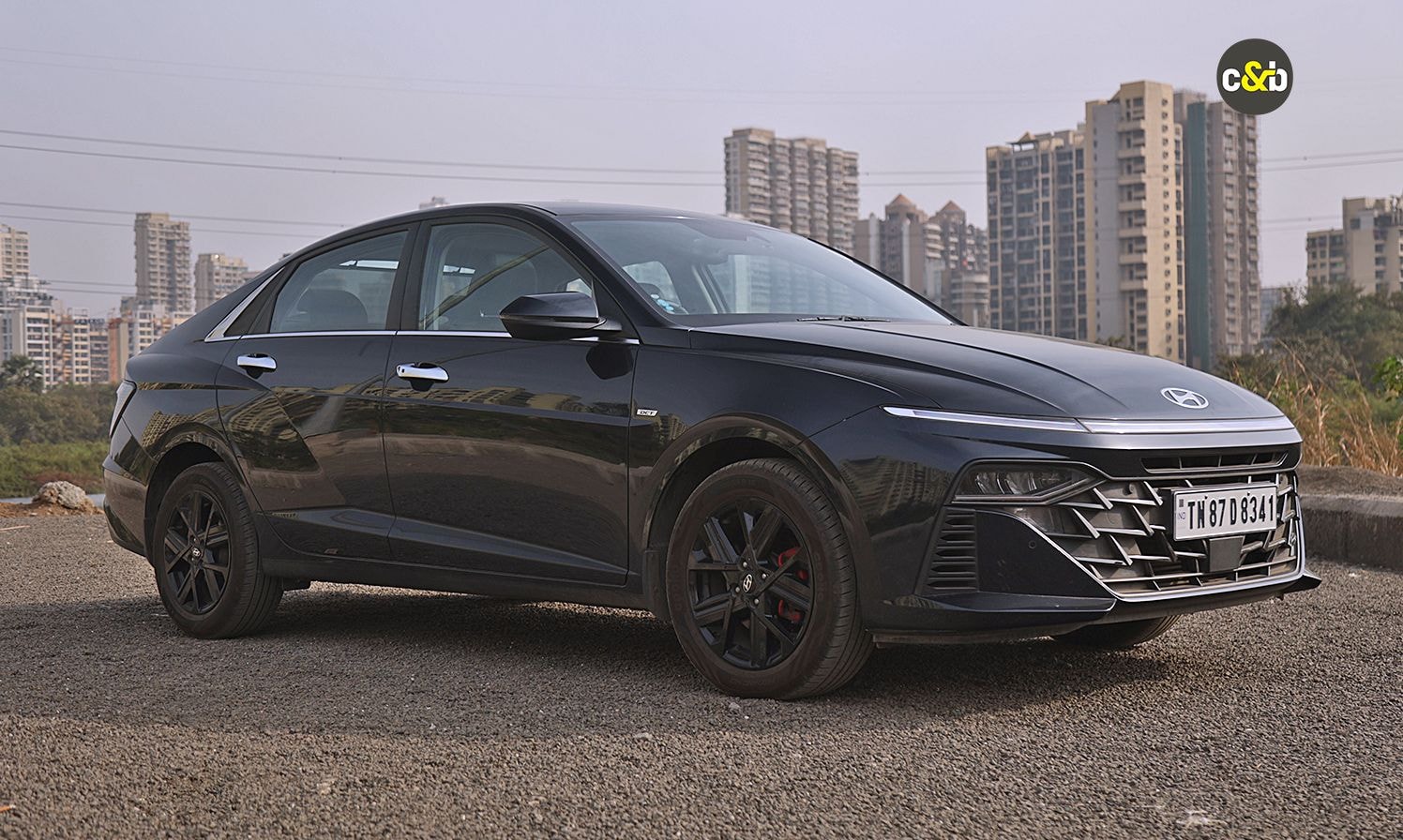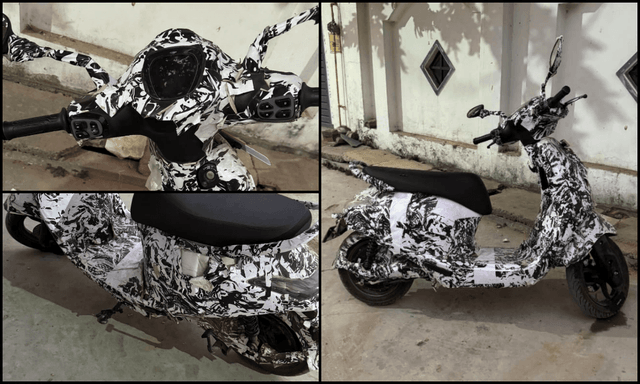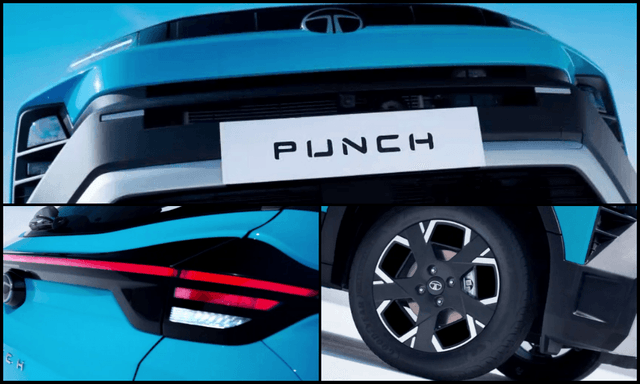8000 km Long Term Review: 2023 Hyundai Verna SX(O) Turbo/DCT

- Returned a fuel efficiency figure of 12-13 kmpl
- Perfectly balanced for daily usage
- Doesn’t disappoint on performance expectations of a sedan
Launched in March, last year, the all-new Hyundai Verna was added to the car&bike long term test fleet a few months ago. The midsize sedan has now crossed 8000 km on the odometer and I thought this is a good time to explain how it has been living with what recently emerged as Car of the Year at the car&bike Awards 2024.
Variant & Price
The all-new Verna is currently the flagship sedan in the Hyundai India line up sitting one level above the sub-4m Aura compact sedan. There is a total of 11 price points at which it is available, starting from Rs 11 lakh and going up to Rs 17.5 lakh.
Prices for the Hyundai Verna start from Rs 11 lakh and go up to Rs 17.5 lakh
There are two petrol engines on offer. The range starts with a 1.5-litre fuel-injected unit – 113 bhp/144 Nm – mated to a 6-speed manual gearbox. There are four trims on offer – EX, S, SX and SX(O). This engine is also available with a ‘Continuously Variable Transmission’ (CVT but called IVT by Hyundai) but only in the top two trims.
Also Read: carandbike Awards 2024: Hyundai Verna Is The Breakthrough Car of the Year
On the more powerful side, there is another 1.5-litre turbo-charged unit. No, this is not a turbo variant of the other engine. On paper this is 15 cc smaller but makes a healthier 158 bhp of power and 253 Nm of torque – both being the highest in this sedan segment. This engine also comes with the option of a 6-speed manual gearbox or a ‘Dual-Clutch Transmission’ (DCT). Just like the CVT, the DCT is only available in the more expensive SX and SX(O) trims.
While our Verna came in the Starry Night (dark blue) single-tone colour, there are 9 colours to choose from
We got our Verna in Starry Night (dark blue) single-tone colour. There is a total of 9 colour options to choose from, of which two are dual-tone (White/Black and Red/Black). These are only available with the turbo engine variant. Personally, I prefer an understated single-tone option as I think it adds more sophistication which is what a sedan is all about. Interestingly, the dual-tone option on a Verna doesn’t cost anything extra, unlike some other brands. Our test model retails for approximately Rs 20 lakh on-road (as of March 3, 2024).
Daily Driving
Our long term Hyundai Verna came with the 1.5-litre turbo-charged petrol engine in top-spec SX(O) trim
During its time here at car&bike, I realized how efficient and practical the Verna is as a daily driver. The current market trend is skewed towards SUVs in practically every price segment thanks to the nature of our roads. Most urban areas are seeing a massive infrastructure overhaul which has left everyone fighting for space on the shrunken roads. Seems it is better to have an SUV where you sit higher. While new highways are being developed at break-neck speed, the same cannot be said about maintaining the existing/older ones. With many requiring repairs, it seems logical to have cars with higher ground clearance. Also, more bulk for added perception of vehicle safety.
Also Read: car&bike Awards 2024: Hyundai Verna Is Car Of The Year
Despite being a sedan, the Verna was able to manage the bad roads of Mumbai with ease
Quite frankly, having driven this sedan over an extended period in all kinds of terrain, ground clearance has almost never been an issue. Half of my monthly commute is between the North-Western suburbs to central Mumbai. A total of 25km, one way, through a mix of moderately flowing arterial roads and claustrophobic bottlenecks. The Verna was more than adept at handling both. It is as effortless crawling through bumper-to-bumper traffic as it is barreling down open stretches.
Also Read: 2023 Hyundai Verna Review: Both Petrol Engines Driven
The combination of healthy torque at low end and a quick-changing gearbox means you don’t have to struggle making the most of instant pick-up needs. When you want to coast at a reasonable 80 kmph on the stretches you can, the Verna is amazingly calm, both getting there and maintaining the speed. The light steering at slow speeds is a boon as most of my daily driving also requires manoeuvering it constantly through cramped roads and tight parking spaces. Overall visibility is acceptable. While the Verna is feature-rich, it however doesn’t come with a front or 360-degree camera which is fast becoming a norm for cars in this price range.
The Apollo tyres are good and grippy, but if you regularly drive on bad roads, you might have to deal with punctures
Even with four passengers and luggage, the Verna doesn’t feel sluggish. It maintains its fleet-footed nature. In fact, it feels more stable with a full load as it squats down further. In such a situation you may have to mind the speedbreakers although during our stint we didn’t come across any undercarriage scrapers. We did have one issue with its (Apollo) tyres. There is a lot of construction debris in and around Mumbai roads and we got unlucky with punctures – twice. The tyres – in case you get those on your car – however are good to grip and provide excellent ride quality in tandem with the supple suspension set-up of the Verna.
In real world, the Verna returned around 15 kmpl at its best
While power is available in healthy doses, the downside can be fuel efficiency. According to ARAI (the vehicle certification body), the Verna can go 20.6 km on a litre of fuel. Of course, this figure is as per its test cycle. In real world, it returns around 15 kmpl at its best (steady, medium-load, highway-only run). In my city usage, I have mostly got around 10 kmpl. So overall, if you aren’t one of those always-on-the-limit drivers, the Verna DCT can return 12-13 kmpl, with the AC on, without having to try too hard. The car comes with a 45-litre fuel tank so you are looking at an average refill every 500 km when used as a daily driver.
Features & Convenience
The grippy steering wheel has both tilt and telescopic adjustments
Hyundai has packed a healthy dose of features into the car. From the drivers’ side you have the convenience of power seats (except height adjustment which is a manual lever), and a grippy steering wheel that has both tilt and telescopic adjustments. The seats are large and comfy and come with built-in cooling features for both front passengers. It is a comfortable place to be in – even when stuck in traffic. The cabin is quiet, refined and well put with its large touchscreens that are easy on the eyes. The AC was also more than adequate in the Mumbai heat. Our test car came with a Bose music system which sounds premium and ups the entertainment quotient.
The Verna's cabin is a comfortable place to be in – even when stuck in traffic
While you can check out the entire feature list here, by virtue of being the most expensive form it gets some features that are unique to this SX(O) Turbo DCT trim. These include an electronic parking brake (EPB) instead of a regular hand brake lever and a rear disc brake compared to drums. Personally, I wouldn’t mind letting go of the EPB but rear disc brakes are much needed for a car that can do the speeds the Verna does. You may find braking a bit inadequate in lower trims. Also unique to this trim and variant are paddle shifters – handy at times of overtaking or going downhill. For the record, it does come with Auto Hold.
The Verna is loaded with wide dual screens, Bose music system, ventilated seats and more
The ADAS suite is only available in the top IVT and DCT SX(O) variants but there are two features that were unique to our car. These include adaptive cruise control (Hyundai calls this Smart Cruise Control that can slow and speed up according to traffic ahead when cruise control is activated) and lead vehicle driving away notification.
The ADAS suite is only available in the top IVT and DCT SX(O) variants
Verdict
The Verna brand name first appeared in India back in 2006 as it came in as the spiritual successor to the erstwhile Accent midsized SUV. In fact, the Verna is sold as Accent in some other countries even today. In its latest avatar, Hyundai stopped the diesel engine option, which would have been nicer on the fuel efficiency front at least. Nevertheless, in the turbo/DCT guise, the Verna packs a superlative punch as it clearly outshines its rivals as an overall package of an everyday car that feels premium and makes a statement for its owners.
The Verna's design is polarizing, especially the front with its horizontal light bar, but it grows on you
In India, ever since it first appeared, the Verna has always been in the shadows of the Honda City which was the segment benchmark. If you were to consider sales numbers as a measure, it is only now that the Verna has emerged at the top. Its compact cabin has always been a sore point for a sedan this size but Hyundai has finally got that right with the newest generation. While it is still the smallest in length compared to a City as well as the Volkswagen Virtus and Skoda Slavia duo, space at the rear seat is generous with ample legroom and plush seats. The humungous 528-litre boot is in fact the biggest of the lot and comes with nice touches such as a bungee net to keep smaller luggage pieces in place.
It is an amazingly practical and comfortable car, one that will serve you with as much diligence in any sort of scenario
The design is polarizing, especially the front with its horizontal light bar, but it has grown well on me as well as my colleagues at car&bike. Going by the second glances it gets often by roadgoers of all ages, it is an eye-catching design for sure both in the day and at night. Hyundai has packaged this car spectacularly. You almost don’t miss some of the hygiene features, or at least it shouldn’t be a deal breaker.
The 528-litre boot is the biggest of the lot and comes with nice touches such as a bungee net to keep smaller luggage pieces in place
For what it serves, the Verna comes across as an aspirational car. It’s a different choice given the flurry of SUVs coming our way, will make you stand out. But that is not the final purpose. It is an amazingly practical and comfortable car, one that will serve you with as much diligence in any sort of scenario which is what you finally look for in any car.
Fuel Efficiency: City – 9-10 kmpl, Highway – 14-15 kmpl, and Average – 12 kmpl
We are unhappy to see it leave the car&bike long term fleet and nothing will sum up our review on the worth of this car better than that.
Hyundai Verna Turbo DCT SX(O): Rs 17.42 lakh (ex-showroom)
Odometer reading: 8500km
Fuel Efficiency:
City – 9-10kpl
Highway – 14-15kpl
Overall – 12kpl
Engine Options
1.5 MPi Petrol:
6-speed Manual – EX, S, SX, SX (O) – Rs 11-14.7 lakh
IVT – SX, SX (O) – Rs 14.3-16.25 lakh
(No Dual Tone colours)
1.5 Turbo GDi Petrol
6-Speed Manual SX, SX (O) – Rs 14.9-16.03 lakh
DCT – SX, SX (O) – Rs 16.12-17.42 lakh
(Dual tone colours at no additional cost)
Latest News
 car&bike Team | Jan 4, 2026Auto Sales December 2025: Mahindra Edges Out Tata To No. 2, Hyundai Drops To Fourth In Domestic SalesMaruti Suzuki remained firmly in the lead with domestic sales north of 1.7 lakh units - a 37 per cent sales growth year-on-year.1 min read
car&bike Team | Jan 4, 2026Auto Sales December 2025: Mahindra Edges Out Tata To No. 2, Hyundai Drops To Fourth In Domestic SalesMaruti Suzuki remained firmly in the lead with domestic sales north of 1.7 lakh units - a 37 per cent sales growth year-on-year.1 min read Jaiveer Mehra | Jan 4, 2026Tata Punch Facelift To Get Turbo-Petrol Engine OptionNew teaser confirms big change in powertrain line-up for the Punch micro SUV.4 mins read
Jaiveer Mehra | Jan 4, 2026Tata Punch Facelift To Get Turbo-Petrol Engine OptionNew teaser confirms big change in powertrain line-up for the Punch micro SUV.4 mins read Jaiveer Mehra | Jan 4, 2026Mahindra XUV 7XO India Launch Tomorrow: Here’s What We Know So FarThe facelift to the popular XUV 700, the 7XO will arrive with notable design and tech updates, though engine options are expected to stay unchanged.1 min read
Jaiveer Mehra | Jan 4, 2026Mahindra XUV 7XO India Launch Tomorrow: Here’s What We Know So FarThe facelift to the popular XUV 700, the 7XO will arrive with notable design and tech updates, though engine options are expected to stay unchanged.1 min read car&bike Team | Jan 3, 2026New Bajaj Chetak Spotted Ahead Of LaunchFresh images of the new Chetak continue to showcase a hub-mounted electric motor among other changes.2 mins read
car&bike Team | Jan 3, 2026New Bajaj Chetak Spotted Ahead Of LaunchFresh images of the new Chetak continue to showcase a hub-mounted electric motor among other changes.2 mins read car&bike Team | Jan 3, 2026Tata Punch Facelift Teased Ahead Of Launch On January 13The teaser images focus solely on the exterior, marking the first substantial update for the Punch since it was introduced in 2021.2 mins read
car&bike Team | Jan 3, 2026Tata Punch Facelift Teased Ahead Of Launch On January 13The teaser images focus solely on the exterior, marking the first substantial update for the Punch since it was introduced in 2021.2 mins read Jafar Rizvi | Jan 3, 20262026 Kia Seltos: Variants, Features, Prices ExplainedThe new Seltos is offered in 10 variants and three engine options. Here is a rundown of what each variant has to offer, along with its price, engine and transmission choices, respectively.5 mins read
Jafar Rizvi | Jan 3, 20262026 Kia Seltos: Variants, Features, Prices ExplainedThe new Seltos is offered in 10 variants and three engine options. Here is a rundown of what each variant has to offer, along with its price, engine and transmission choices, respectively.5 mins read
 Amaan Ahmed | Jan 3, 2026VLF Mobster 135 300 KM Review: Fun But FlawedA 125 cc scooter with Italian design and Chinese genes is a rare combination, and while some may be tempted to dismiss it because of its origins, the VLF Mobster shows 125s can also be exciting – but not without compromises.1 min read
Amaan Ahmed | Jan 3, 2026VLF Mobster 135 300 KM Review: Fun But FlawedA 125 cc scooter with Italian design and Chinese genes is a rare combination, and while some may be tempted to dismiss it because of its origins, the VLF Mobster shows 125s can also be exciting – but not without compromises.1 min read Preetam Bora | Dec 30, 2025TVS Orbiter Review: Real-World Performance and Range TestedThe TVS Orbiter is a promising electric scooter promising decent range, practicality and pricing. But is there any reason to avoid it? We spent a few days getting to know it better.9 mins read
Preetam Bora | Dec 30, 2025TVS Orbiter Review: Real-World Performance and Range TestedThe TVS Orbiter is a promising electric scooter promising decent range, practicality and pricing. But is there any reason to avoid it? We spent a few days getting to know it better.9 mins read Jafar Rizvi | Dec 24, 2025MG Windsor EV 38 kWh Long-Term Report: IntroductionThe Windsor EV has joined our garage, and before it settles into daily duty, I took it out to get a sense of what living with an electric car is like.4 mins read
Jafar Rizvi | Dec 24, 2025MG Windsor EV 38 kWh Long-Term Report: IntroductionThe Windsor EV has joined our garage, and before it settles into daily duty, I took it out to get a sense of what living with an electric car is like.4 mins read Seshan Vijayraghvan | Dec 23, 20252026 Kia Seltos Review: Formula Is Spot On, But Is The Timing Right?The 2nd-gen Kia Seltos has arrived, but it has the challenge of facing strong rivals like the Victoris and Sierra. The question is simple - Does it still have what it takes?9 mins read
Seshan Vijayraghvan | Dec 23, 20252026 Kia Seltos Review: Formula Is Spot On, But Is The Timing Right?The 2nd-gen Kia Seltos has arrived, but it has the challenge of facing strong rivals like the Victoris and Sierra. The question is simple - Does it still have what it takes?9 mins read car&bike Team | Dec 26, 2025Tata Punch EV Long-Term Second Report: Highway Performance, Pros & ConsAfter a week of living with the Tata Punch EV Long Range—including a proper Mumbai-Nashik highway test—we've learned what this little electric SUV is really made of.1 min read
car&bike Team | Dec 26, 2025Tata Punch EV Long-Term Second Report: Highway Performance, Pros & ConsAfter a week of living with the Tata Punch EV Long Range—including a proper Mumbai-Nashik highway test—we've learned what this little electric SUV is really made of.1 min read






































































































































